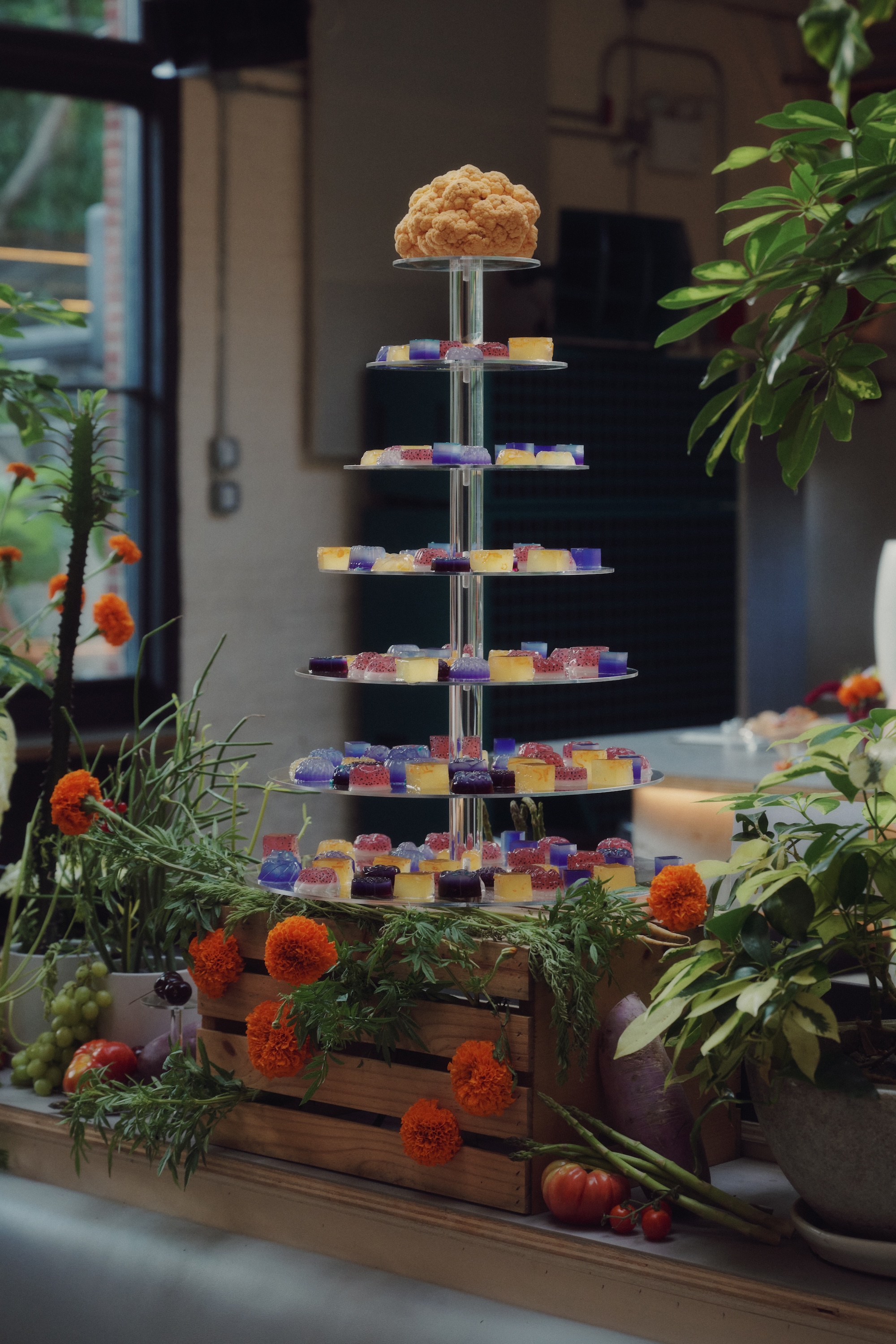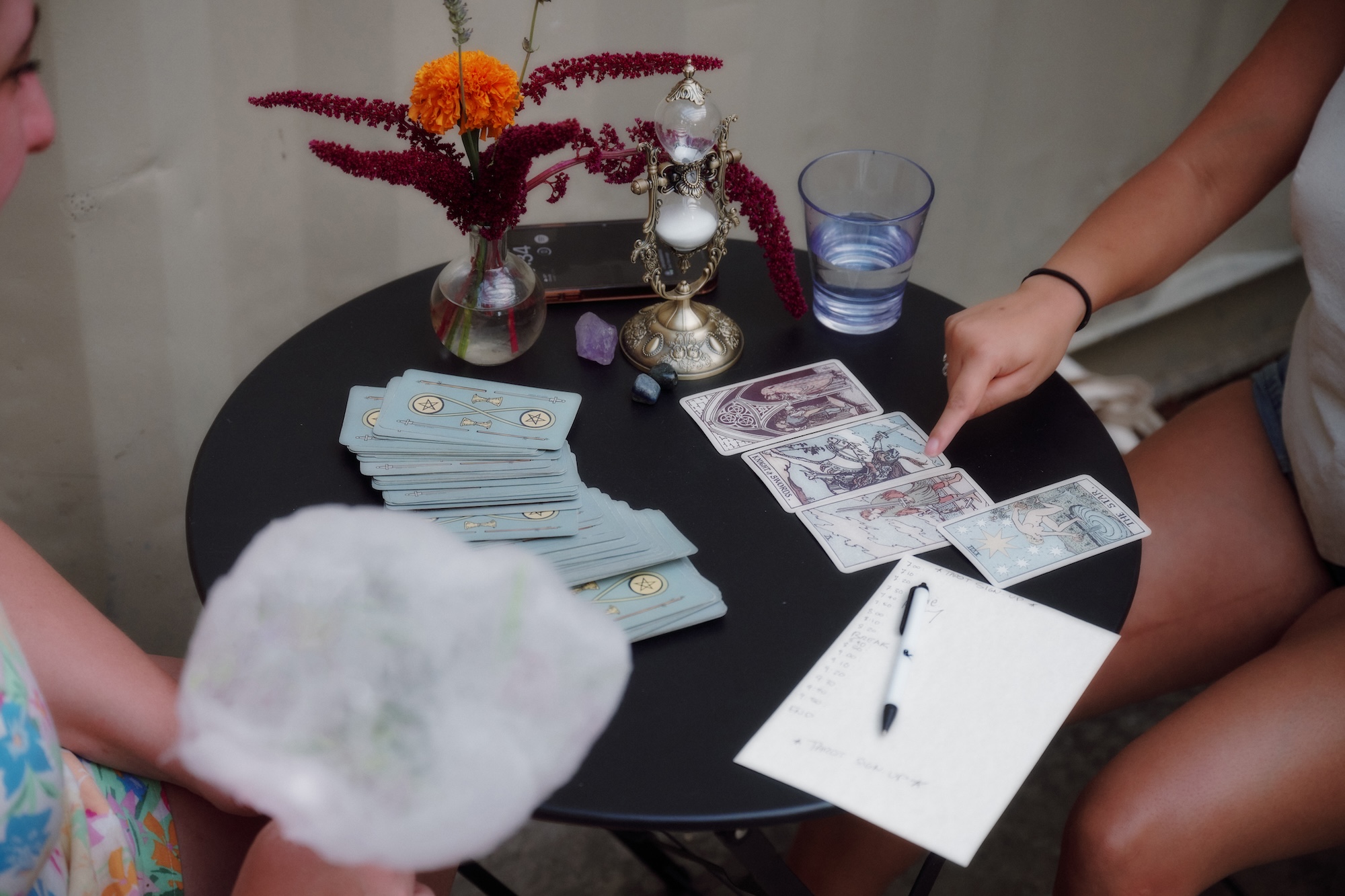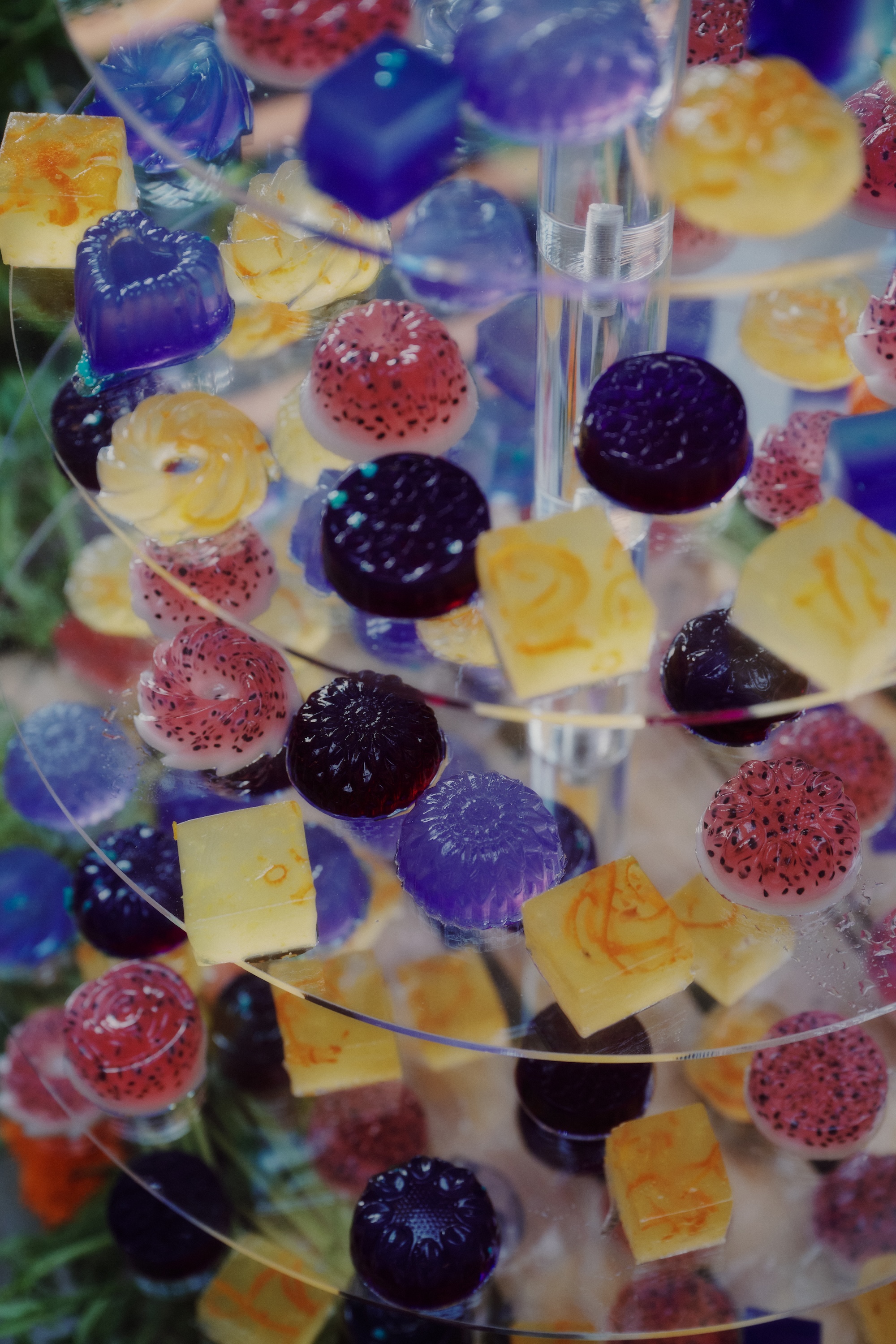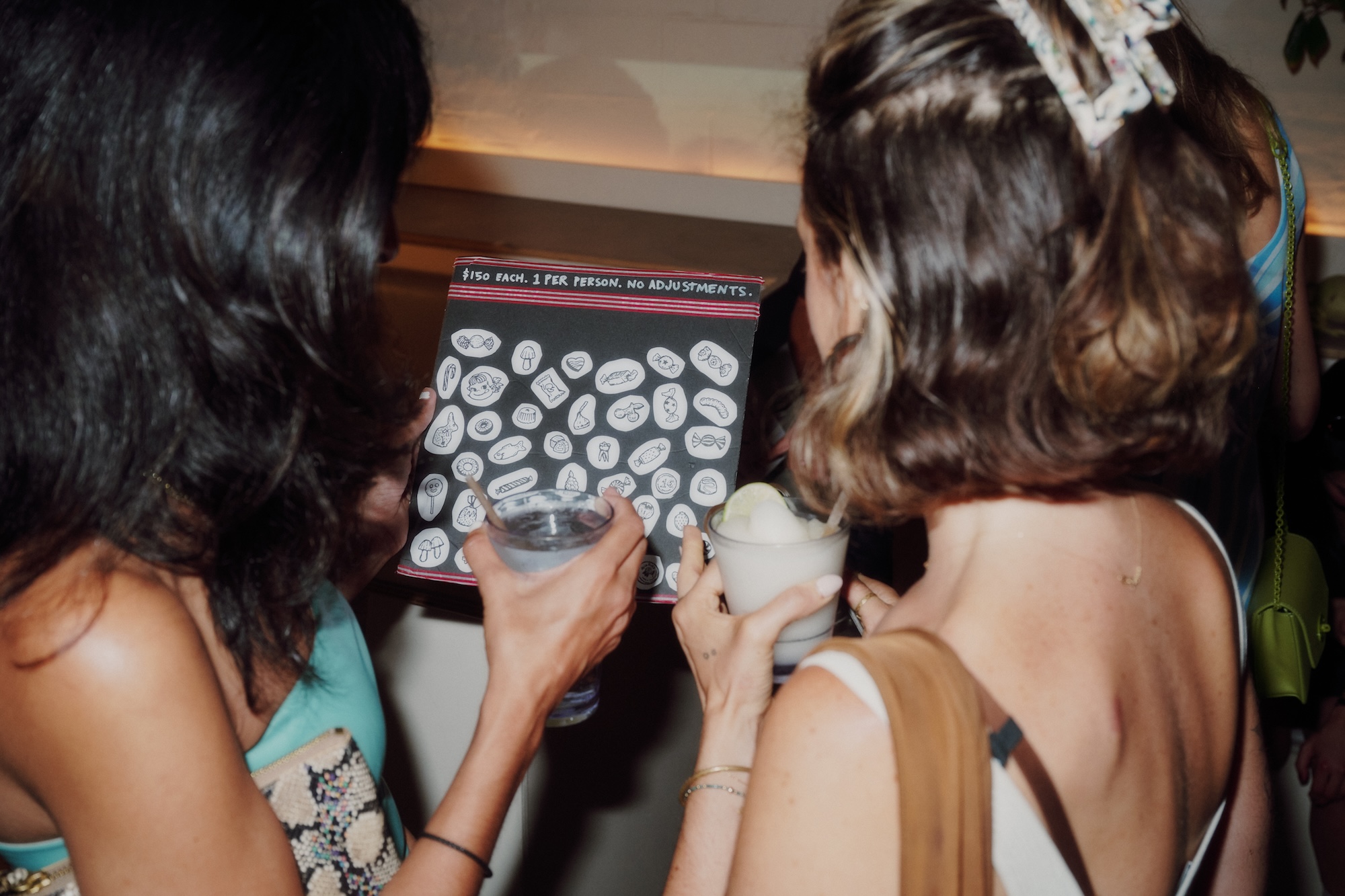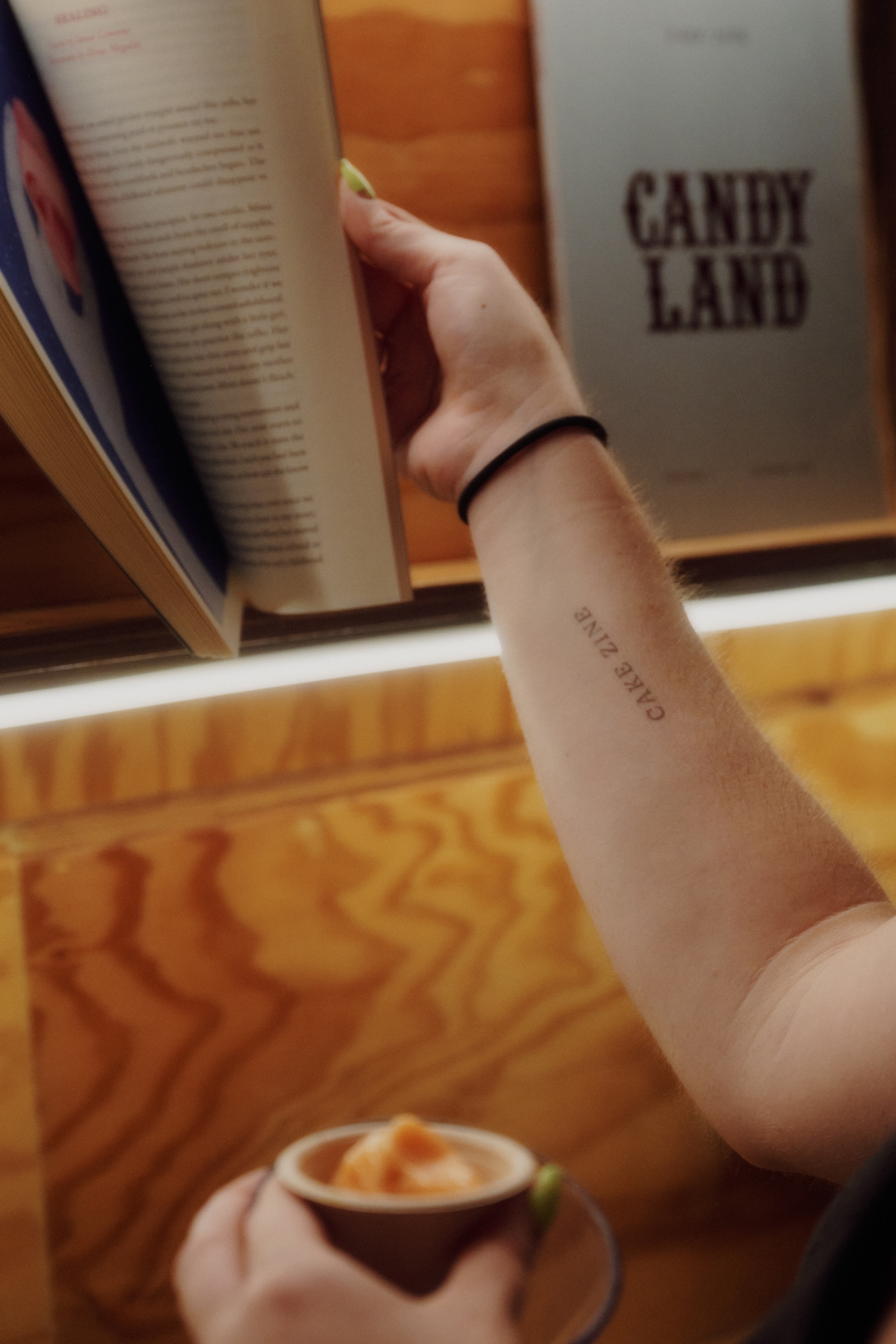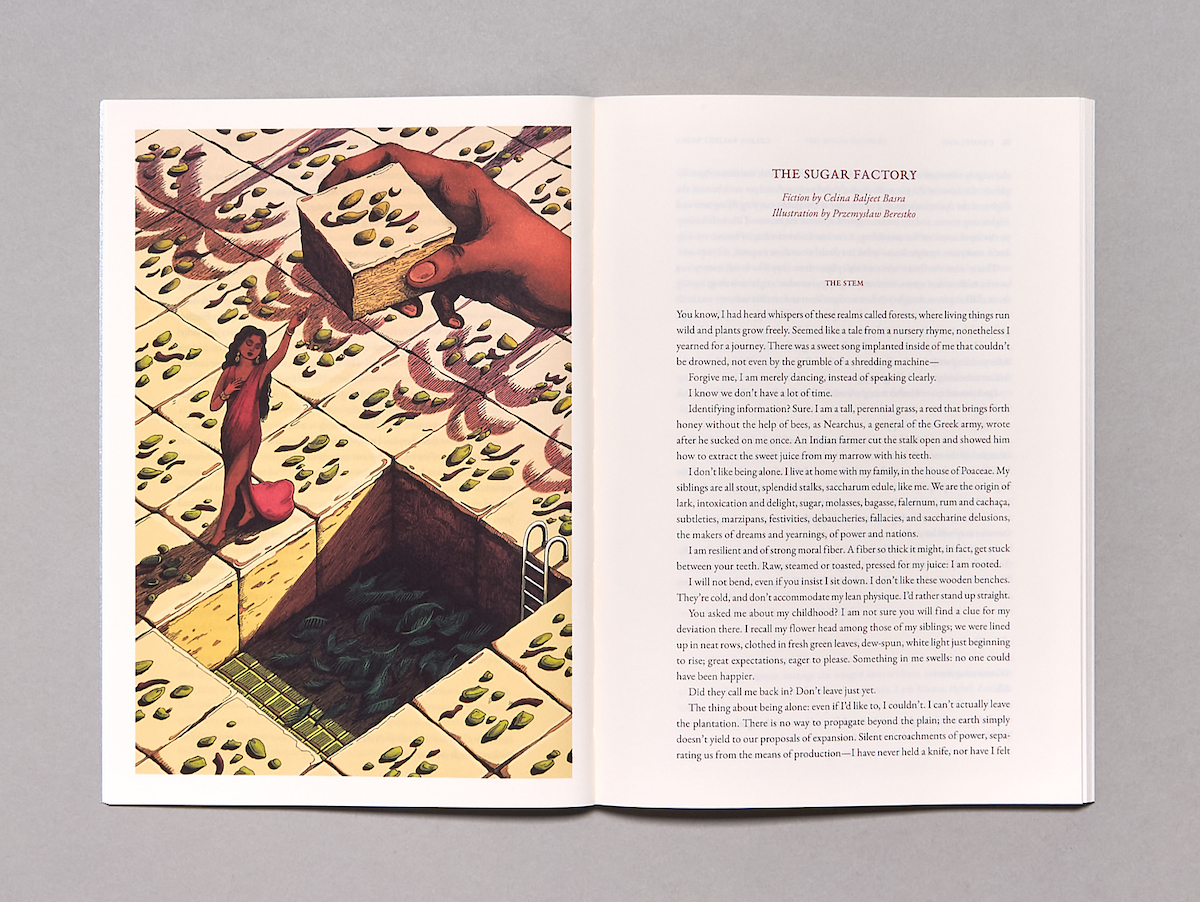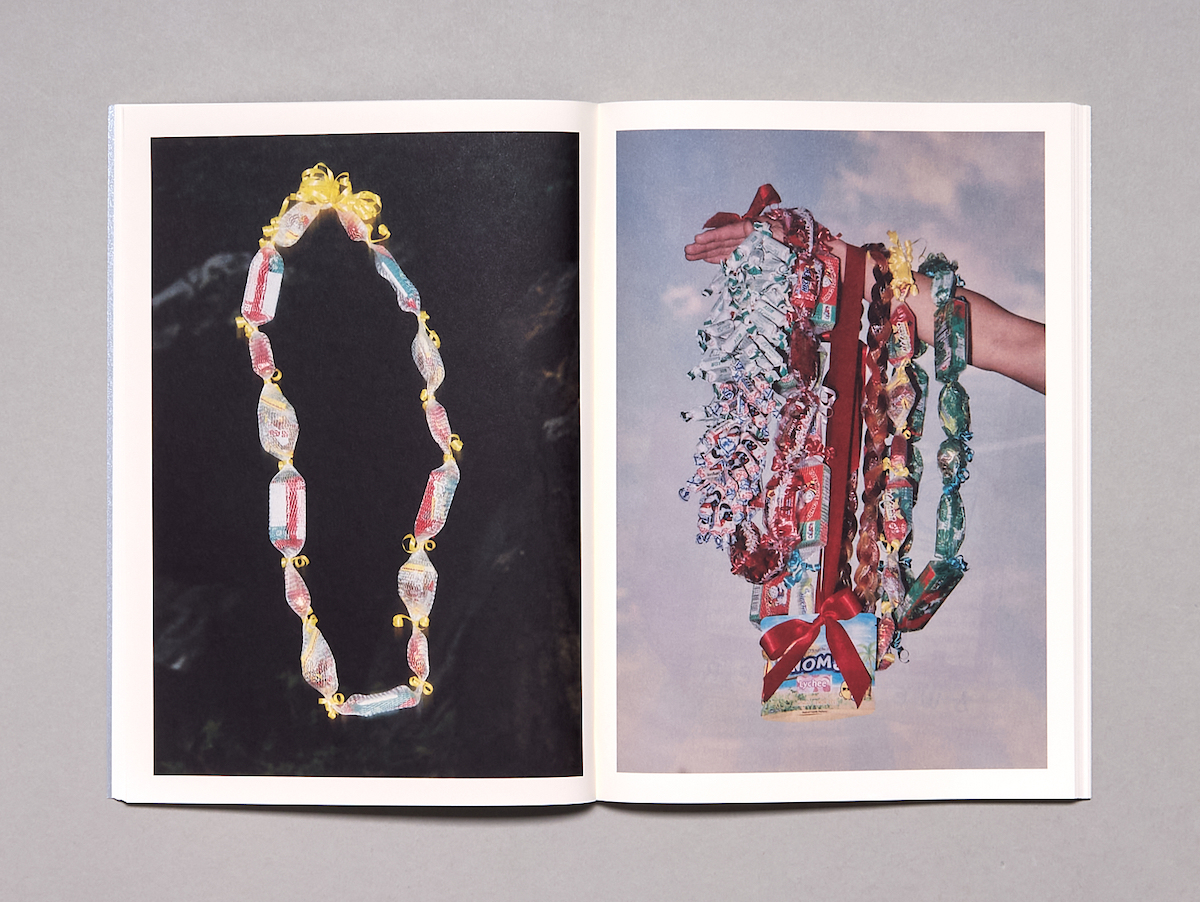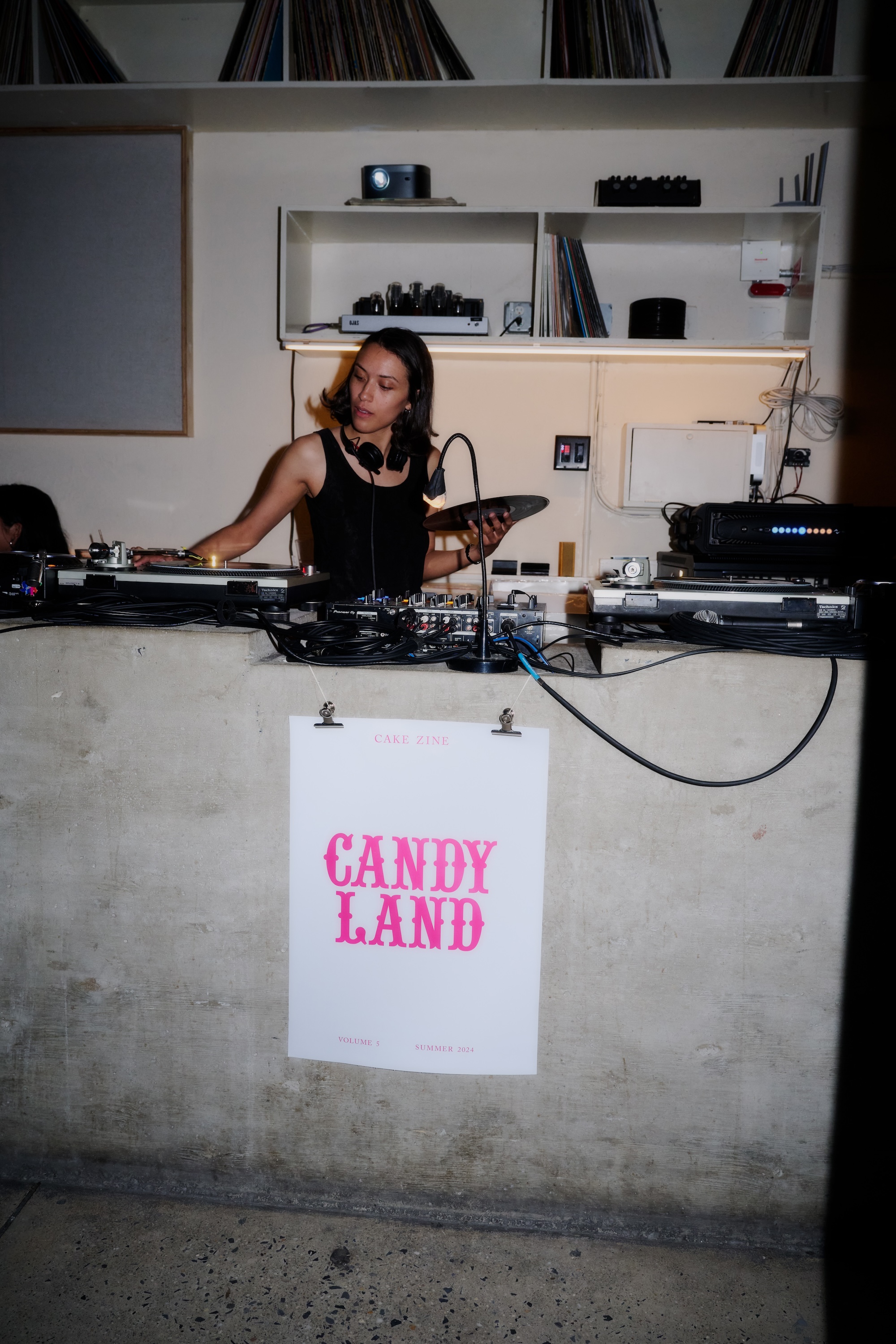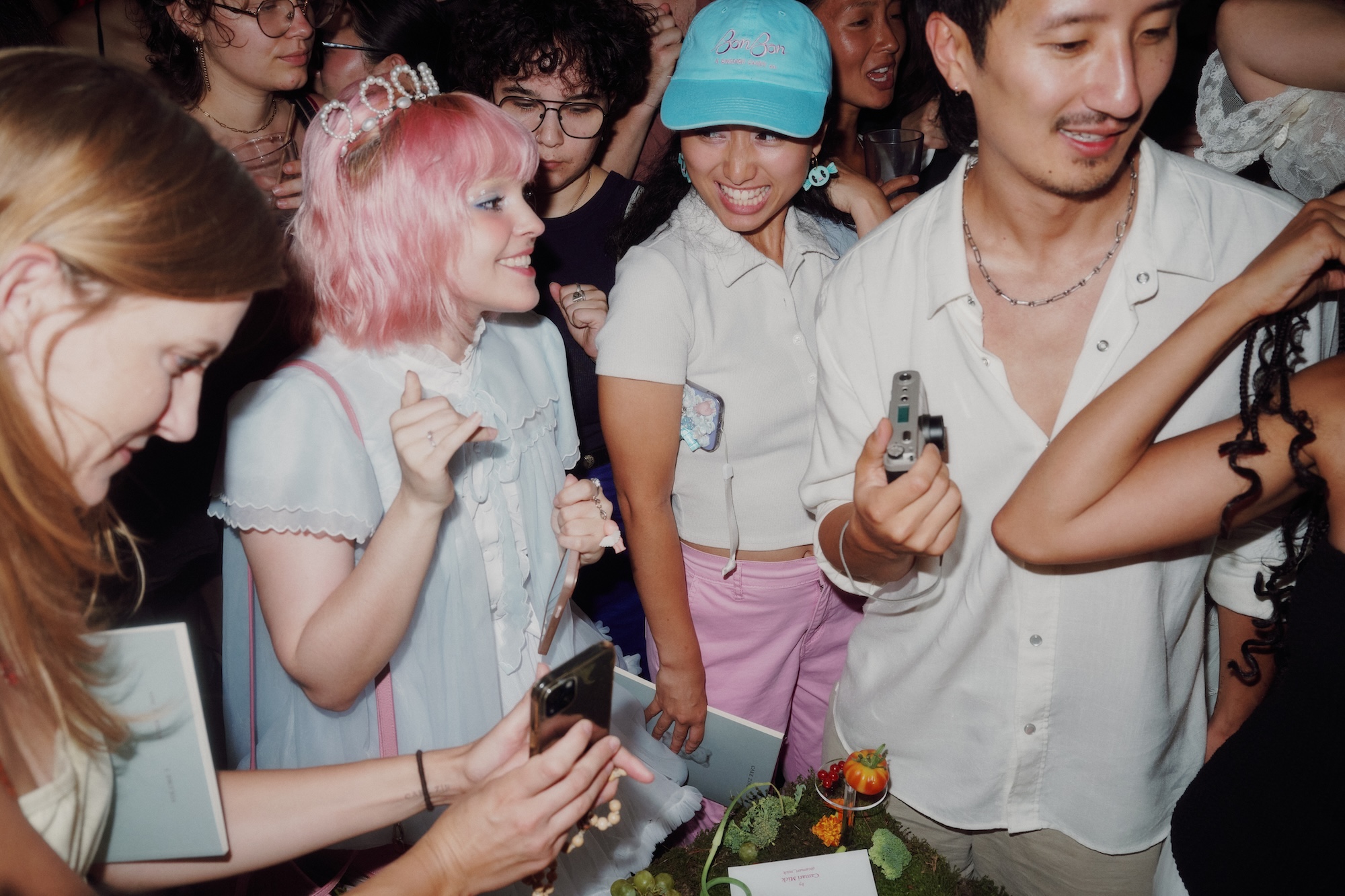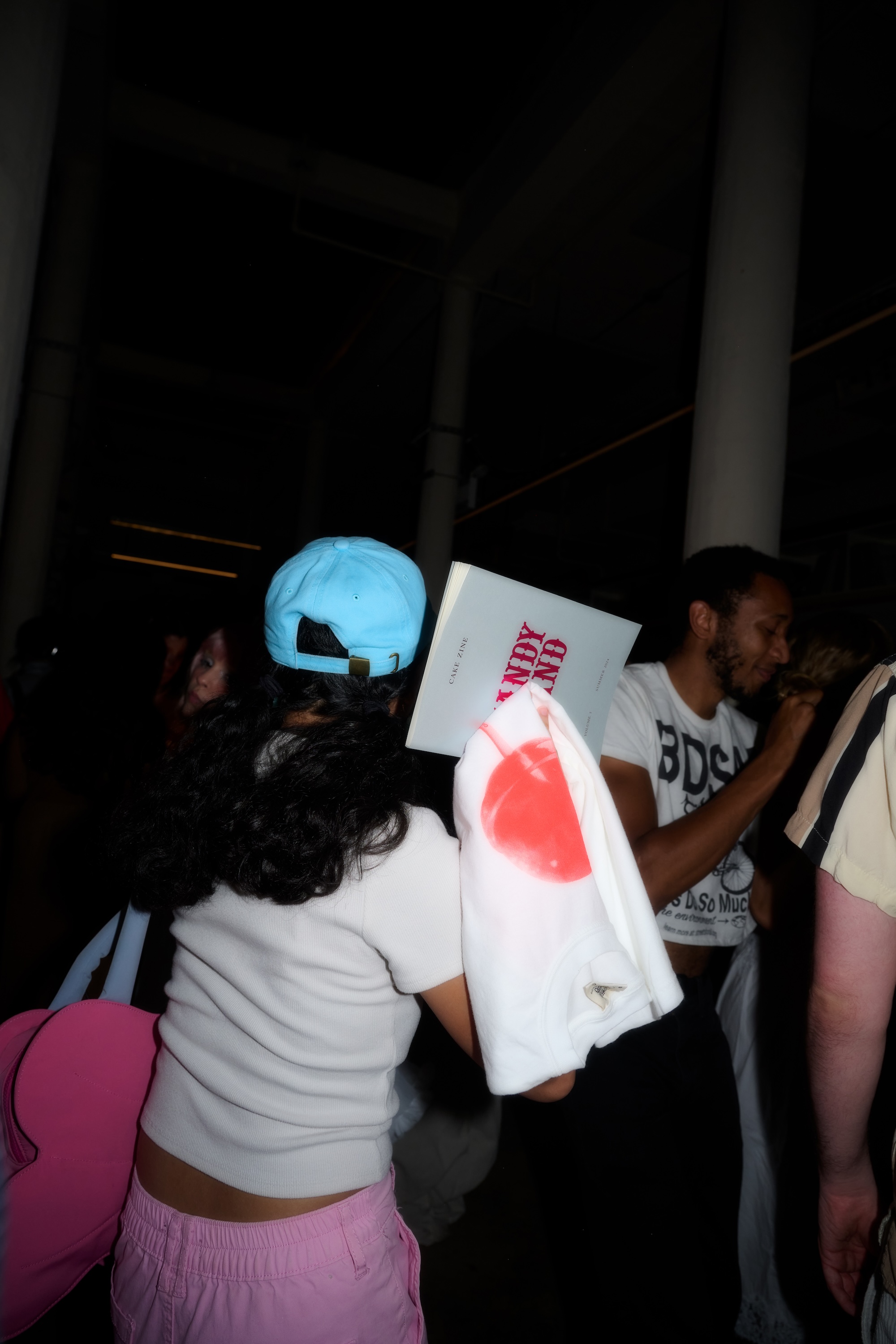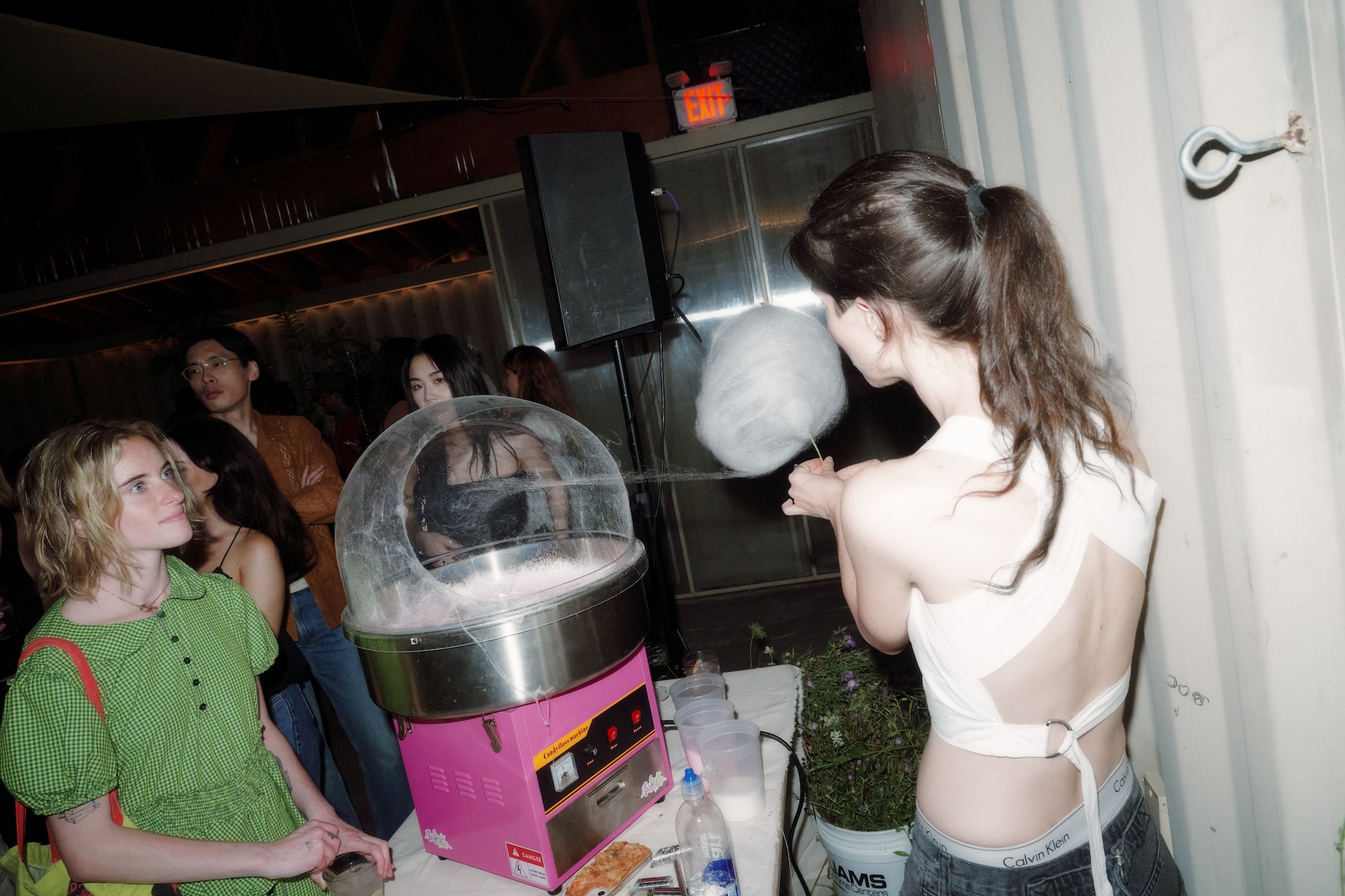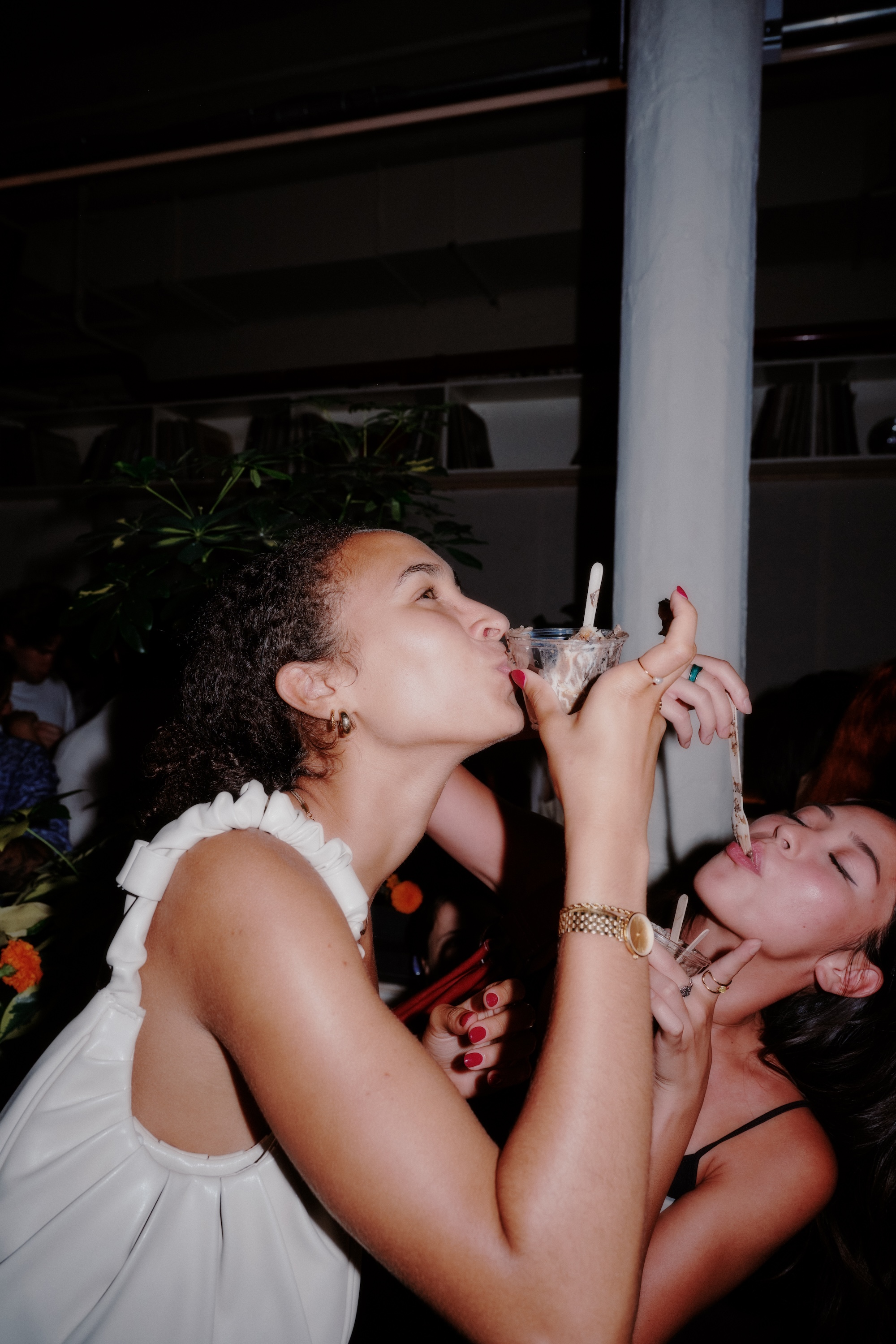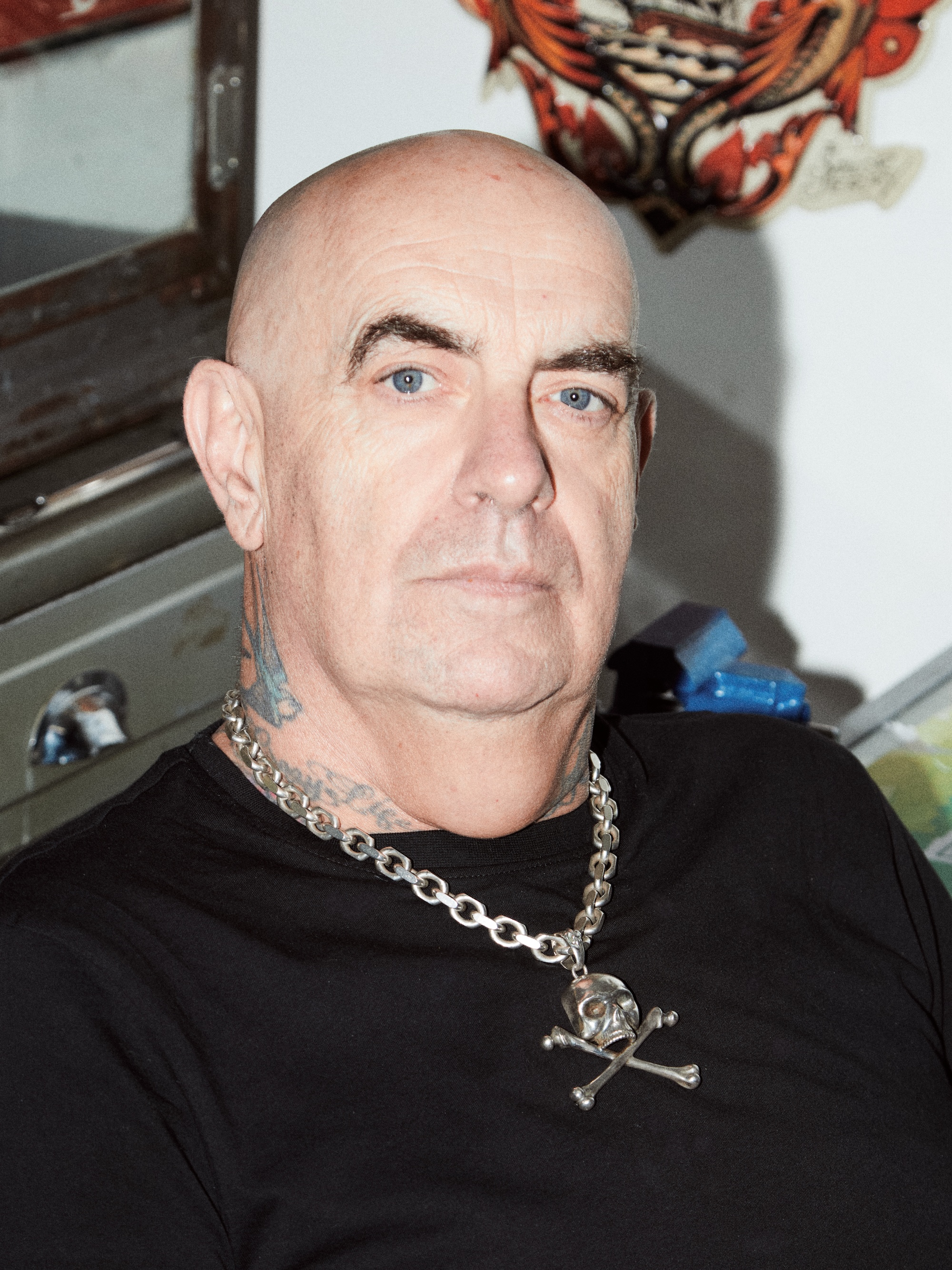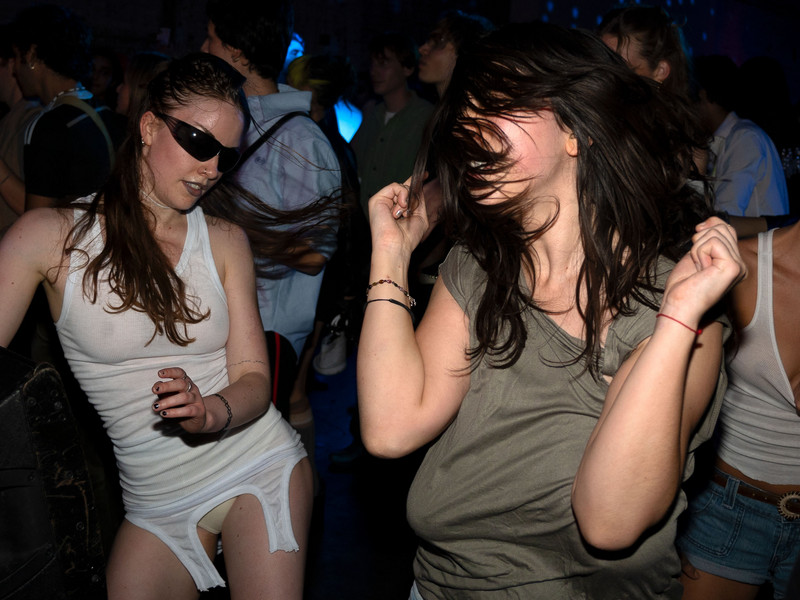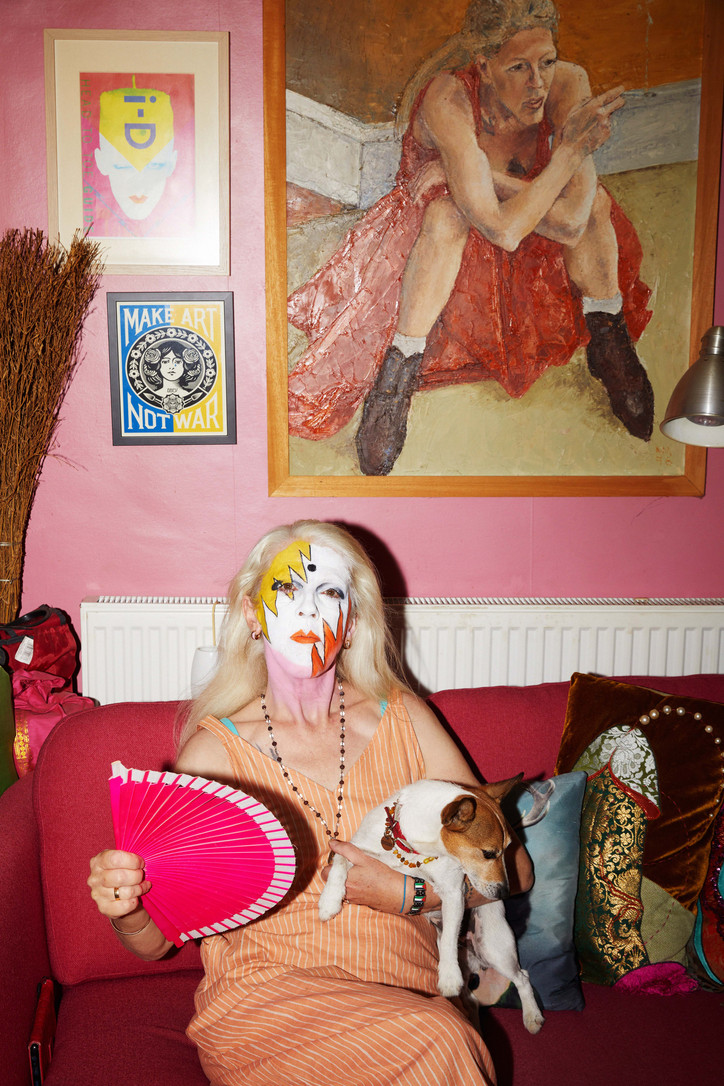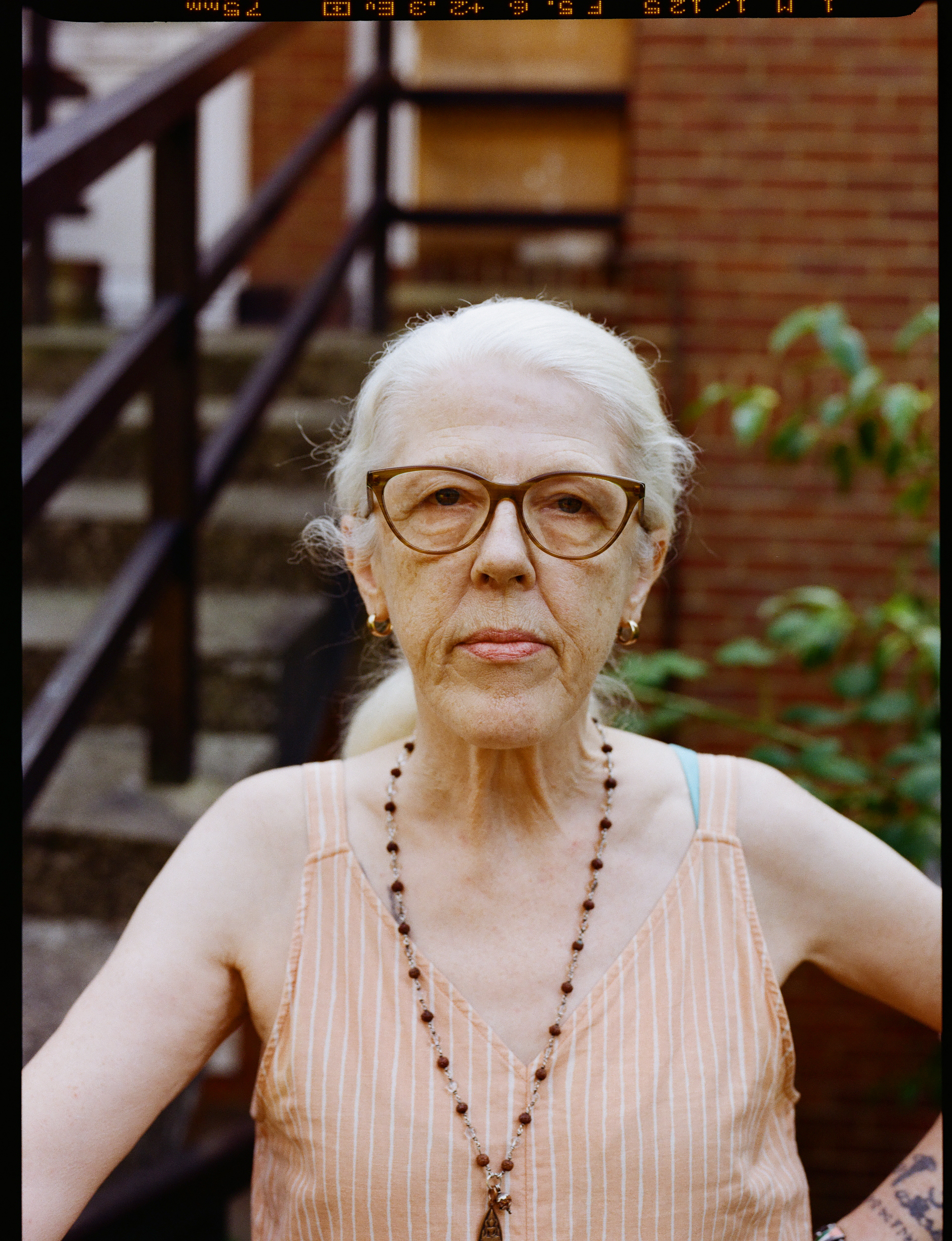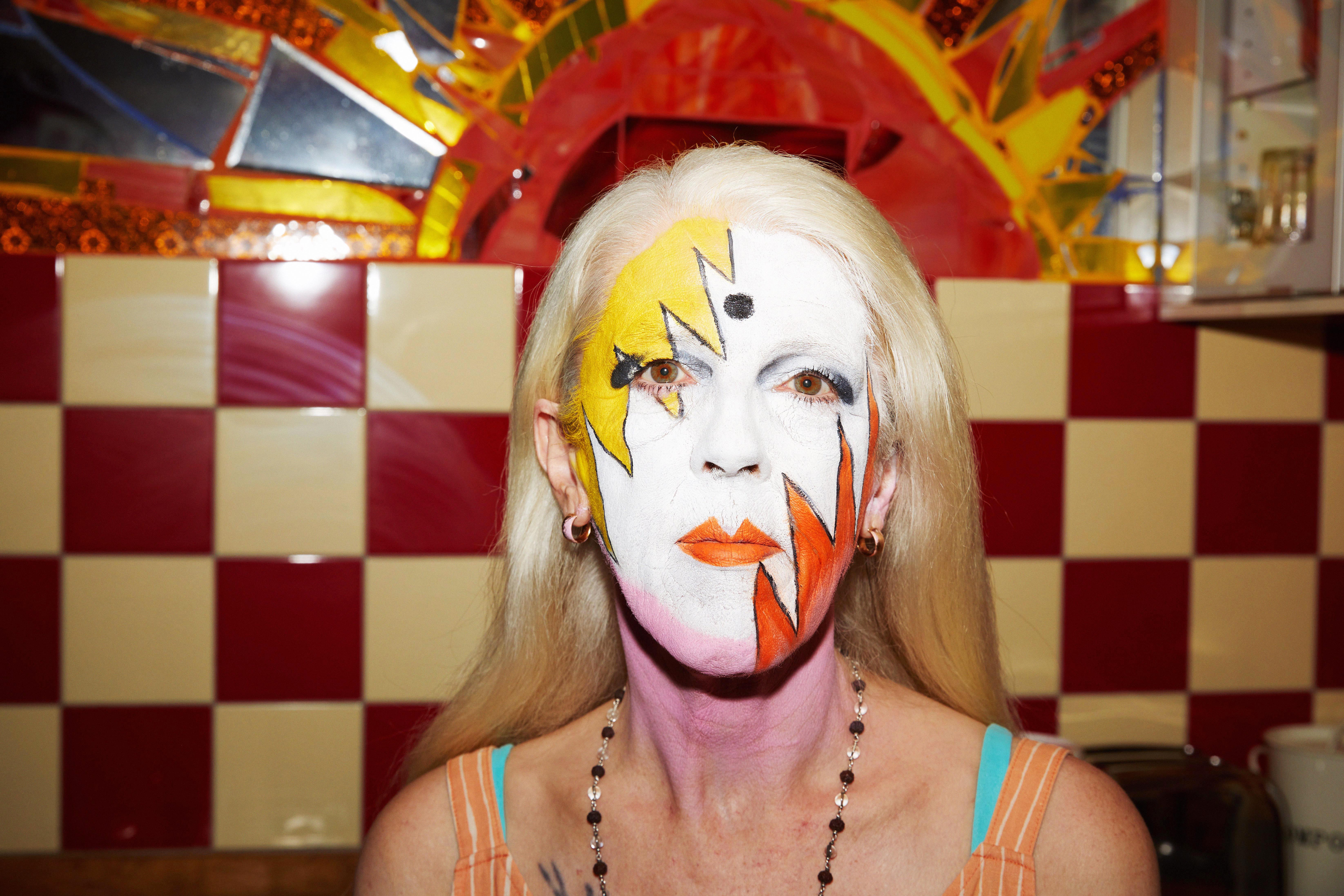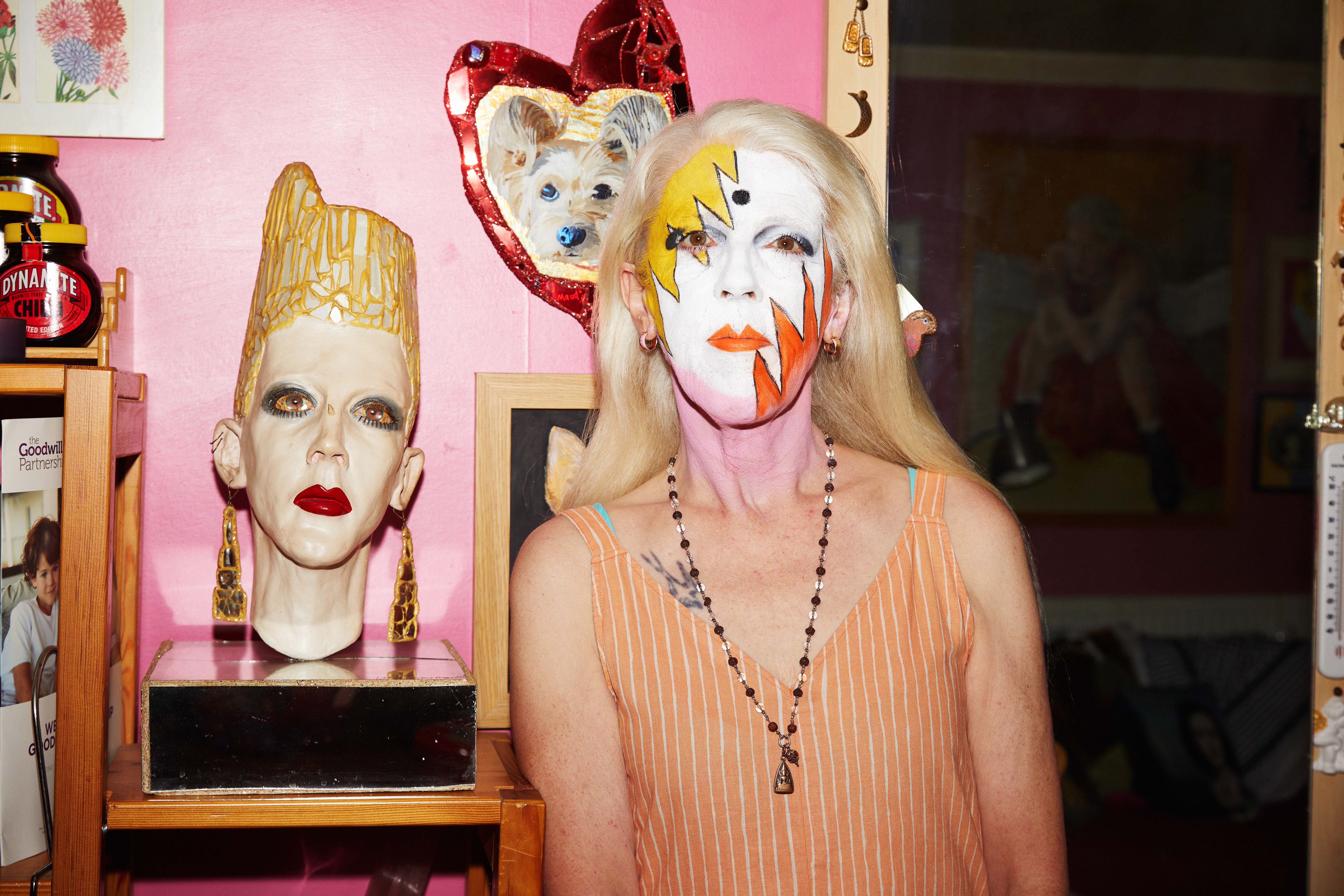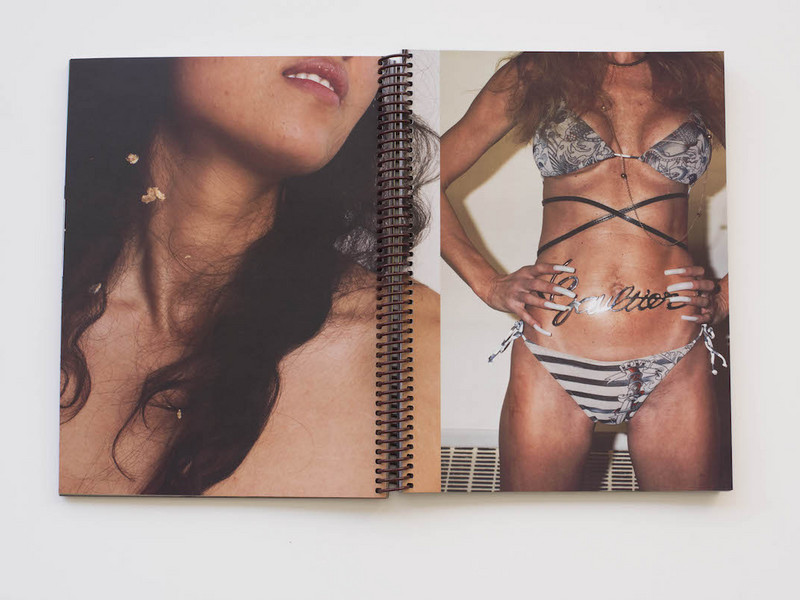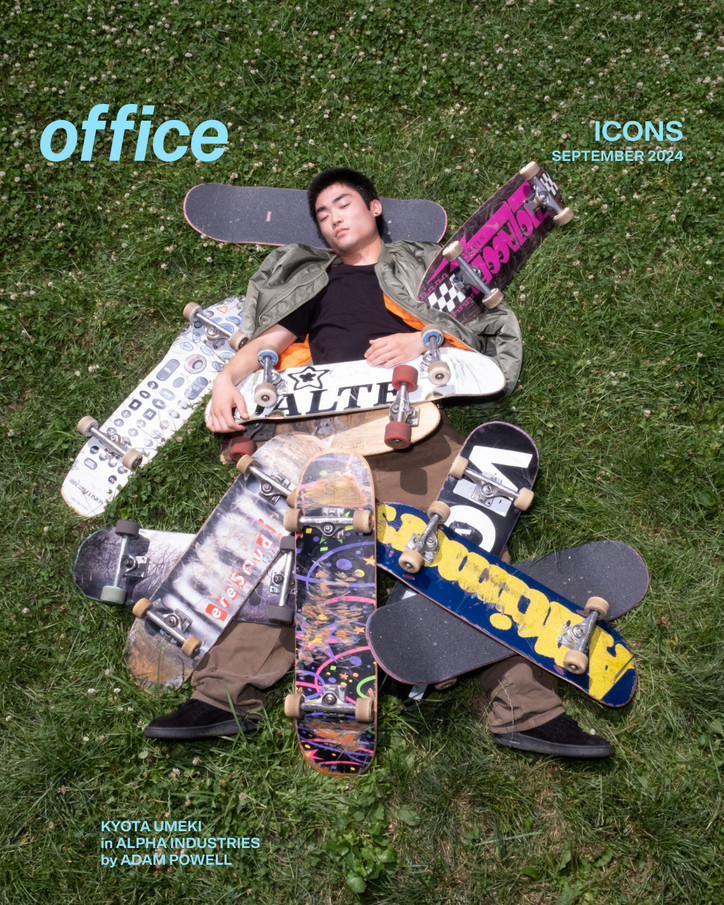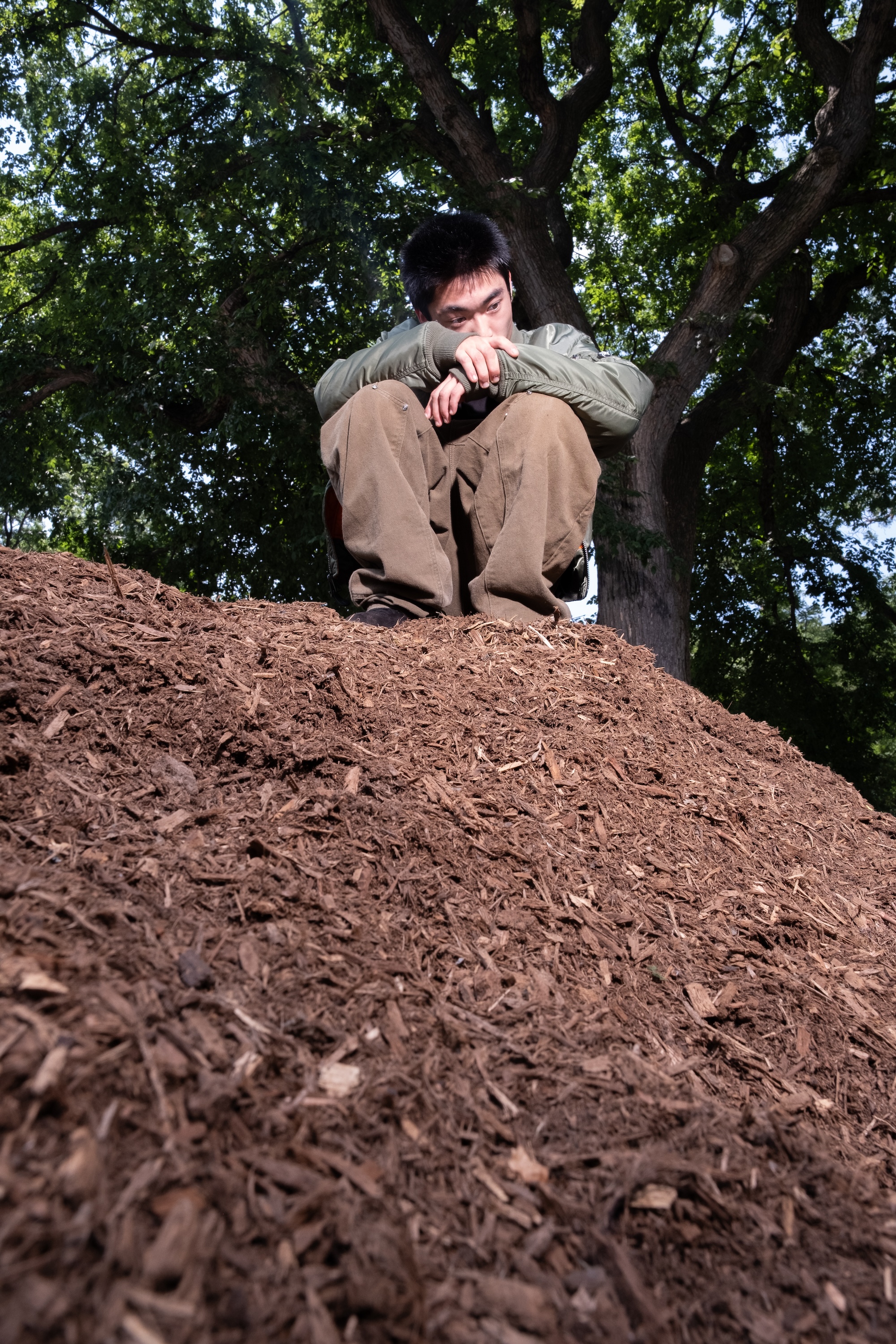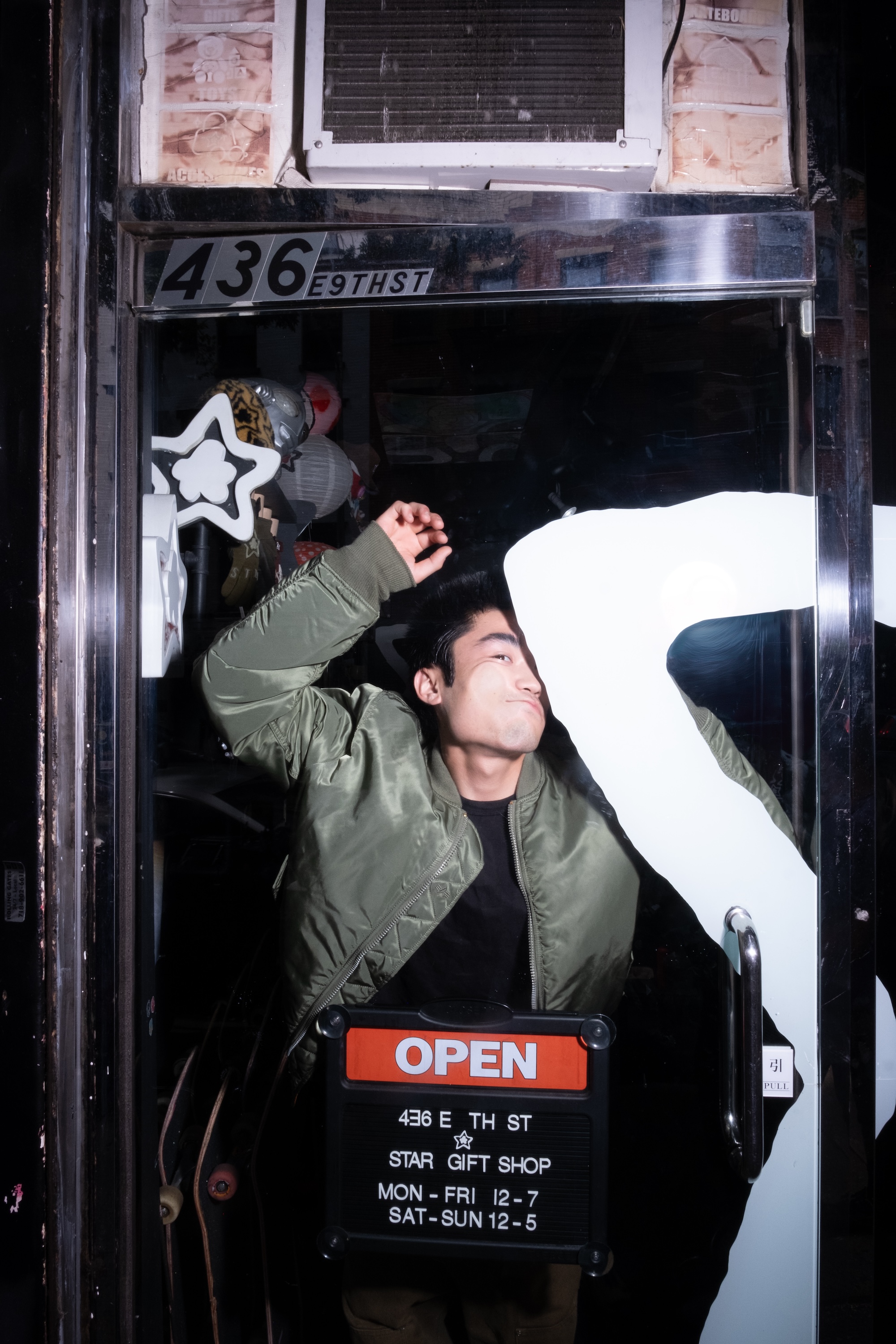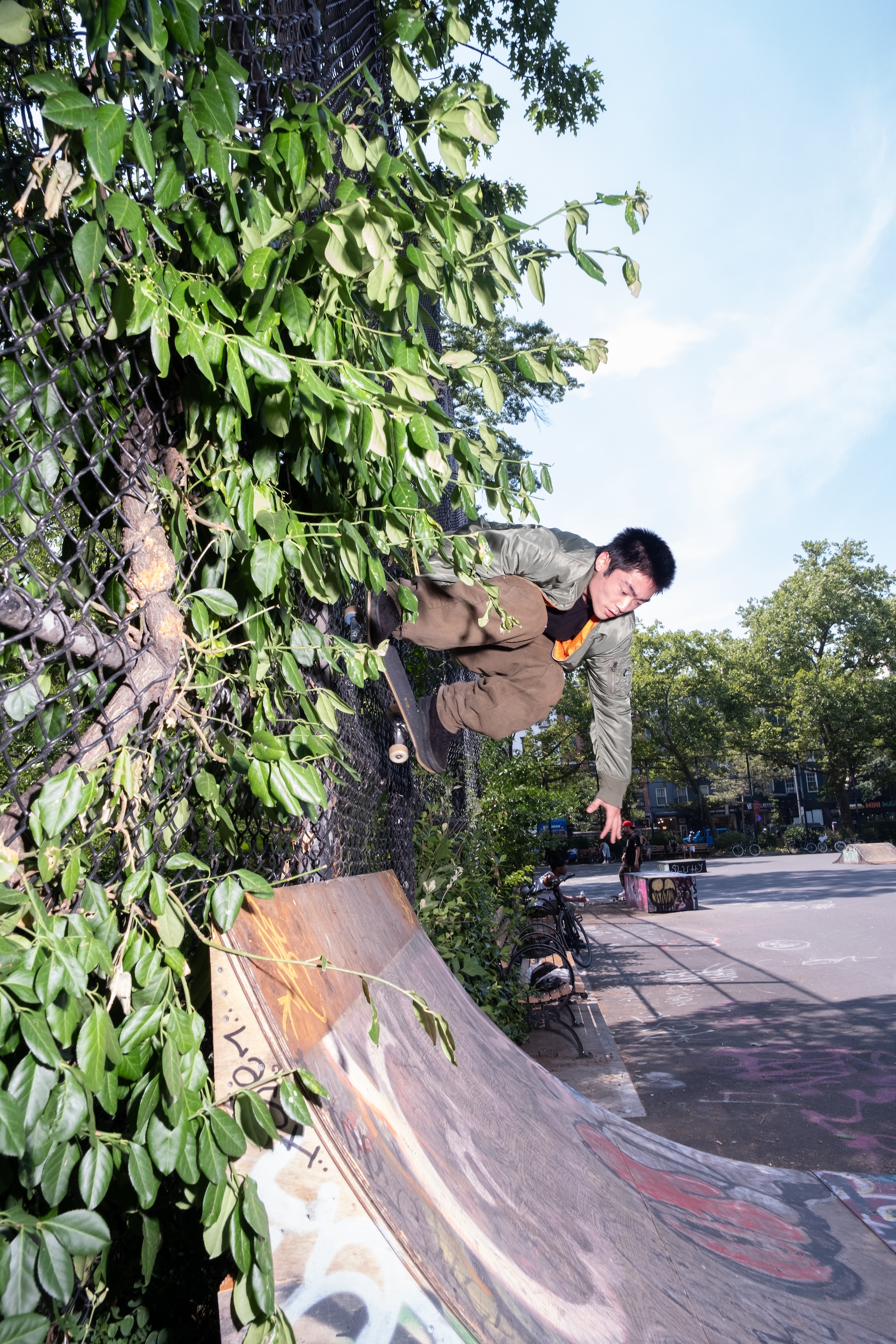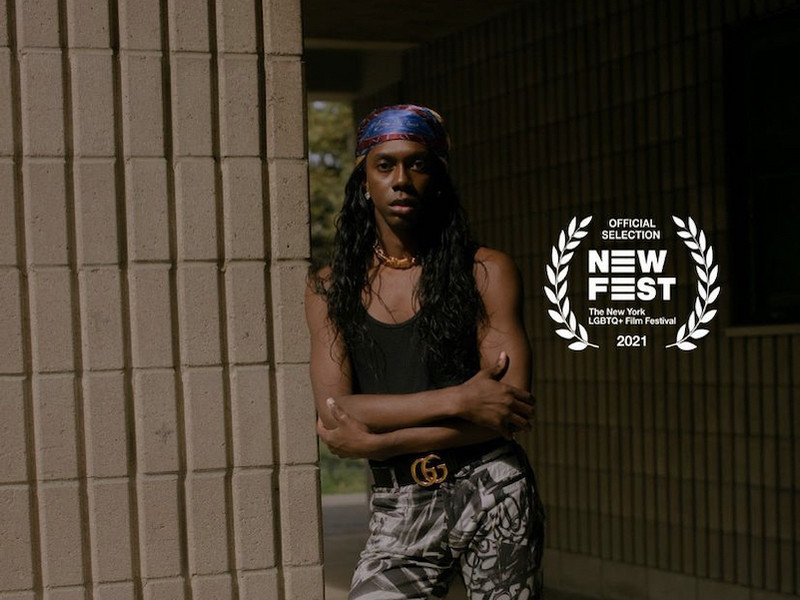A Peek Inside Cake Zine
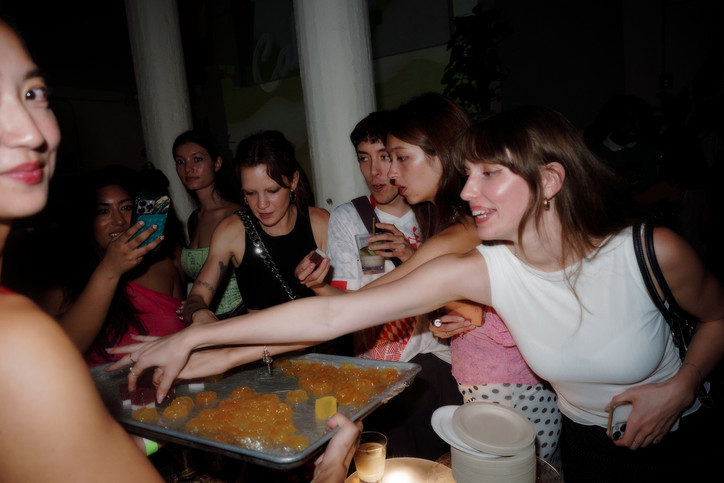
The launch party for this issue was no different from previous ones: a feast for the senses, especially taste, with botanical cotton candy spun onto flowers and Del Maguey-spiked mezcal jelly cakes. A few days earlier, I spoke with Tanya and Aliza about this new issue and the associations that it explores: candy as pleasure, childhood nostalgia, connection to distant cultures, as well as its roots in labor, gluttony, colonial extraction, and exploitation. With a diverse range of contributors unraveling these connections, Candy Land directs critical attention to familiar confections and flavors, highlighting their deeply person and historically global significance in their highly-processed and preserved glory.
Sofia D'Amico— Having just finished the Candy Land issue, I came away with the feeling that I’d read contributions from such a mix of people from different backgrounds— science, history, art, food industry, activism —and, of course, they’re each tackling the topic of candy from different angles. I am speaking from an arts background, but it’s a curatorial decision for these publications that you've put together such varied contributors. I’m curious how you pull together the community for each issue?
Aliza Abarbanel— The curatorial part of the process is the most core to what we do, and we are lucky to have a very robust community of people answering our pitch calls. At the end of every year we sit down and think about our themes for the year ahead. We had a really hard time deciding our summer issue and wanted to do ice cream, but we couldn't think about the right lens for the theme, because we don't just pick a food item, we want a specific context in which we're exploring and then refracting it in as many ways as possible. So with Candy Land, I played that board game all the time as a kid, and started thinking about how candy feels like it's so far removed from the land, but everything we eat is, at its core, tied to these organic ingredients. Candy has impacted the way we allocate and use land in different ways. So we set the pitch call in that framework, and get maybe 300 to 400 pitches per issue just for written content, not including illustration, and we also solicit from people. And as you've read, we probably have about 20 slots in an issue. Then a big part of what Tanya and I do with our editorial board is discussing how we can include as many different perspectives as possible.
Tanya Bush— Yeah, I think that's core to the Cake Zine ethos, that we are an interdisciplinary magazine. We are using these very narrow lenses to explore culture, art, history, and food. That's sort of what Candy Land allows us to access; it’s an interesting subversion of themes. So we have the piece “Candy Land: A Revisionist History” by Elaine Mao on the actual board game Candy Land, but then we have a piece by Simon Wu on kandi with a K, EDM, raver culture, and PLUR. And I think that because we have such a narrow theme, it allows for writers, artists, cooks, and people of all different backgrounds to hone in on something really specific. We have our first piece of fan fiction in the issue, which was really exciting and strange. For every new magazine that we do, we want to incorporate unexpected forms: taxonomies, fables, and listicles. We did a comic once. That was fun.
SD— Yeah, this made it such a rollercoaster to go through. With this issue, some of the features were really funny and joyful or more didactic or historical, and others had really dark undertones. It is a nod to the endless associations that people have with candy itself, in that in some ways it’s a marker of nostalgia, and in others, it's about gluttony or excess. Do you think about that balance when you're putting together an issue?
TB— We don't want to publish a magazine that's an onslaught of darkness, so we are very much thinking of an issue holistically… We want there to be a dynamic balance of hard-hitting reporting and more optimistic features with levity, as one needs in a magazine about dessert. We are first and foremost a magazine about dessert.
AA— With our issue Wicked Cake, the whole theme was talking about this dark side of a food like cake. I think famously of Matilda and Bruce Bogtrotter as a Wicked Cake thing that people would think about. But in general, cake is often super frivolous and fun. And for Candy Land, again, candy is so joyful. But more than any dessert we've covered so far, it's so linked to mass commodification, mass farming, and consumption. Most people don't make candy at home. We all know the history of the sugar trade in this country around the world, how it's linked to slavery and globalization and colonialism. A lot of these big corporations and their labor practices are impossible to ignore, so when tackling this theme, that was something that naturally came up. Part of doing a kaleidoscopic look at a theme would have to, of course, touch on that. But then we want the M&M fan fiction moment in there. We want someone who's diabetic talking about how sugar-free candy is campy and fun in the same moment, because those are obviously core to the candy experience in contemporary culture, too.
SD— And for both of you coming from the kind of food landscape, did you feel like there was a gap in a lot of publications and scenes that specifically connects food discourse with cultural production of different disciplines more widely?
AA— I think there are a lot of food publications that we really admire. I think MOLD and LinYee Yuan’s work is so incredible, and they do a lot of interdisciplinary and forward-thinking food work. Really, we did not intend to start what Cake Zine has become. We just wanted to make a magazine with our friends, then, very thankfully, we had a really great response to that issue and the party we did around it. That heartened us to keep going. Speaking for myself, leaving Conde Nast, I did want to make something that I could never justify to an international corporation business office as being a worthwhile pursuit.
TB— And we are a print only publication, which I think is worth reiterating. We are not constrained by covering hyper-timely stories. As Aliza is saying, we literally cannot because we print in the UK, so it takes a few months to get books over, and if we're going to try and publish something super topical, it's already going to out of vogue by the time that it comes out. So I think that is really liberating and exciting because it means that we're not sort of beholden to the traditional constraints that a larger media publication needs to be. Because we have this sort of niche audience, people really resonate with the more historical literary approach that we take.
SD— It's nice that you have this emphasis on your events too, because food culture is so much about community. And there's also this idea that the issue itself can act as or can deliver little pockets of pleasure. One of the topics that a lot of the contributors are nodding to is that there is this need for greater pleasure and nostalgia in a really challenging and difficult world. Do you guys have any personal reflections on that as you were thinking about the issue?
AA— I would say nostalgia is one of the biggest flavors. In all desserts, in every issue, we encounter people who want to talk about things from their childhood, family members, and recipes. It's interesting because it's such a personal feeling. I recently found out Tanya has never played the game Candyland, so I need to bring a board and we can play it, but it's not a good game as after reading the issue. It was created for children in the polio ward, so it's possible to lose. It means that as an adult especially, there are no stakes to it, but as someone who grew up playing it, I look at those characters and I remember being a kid and thinking they're so weird. They've been around for such a long time, and it's just kind of fun to consider the game in a new way. But, I would imagine for someone who's never played Candyland, reading that article was still interesting.
TB— Yeah, it's an iconic game that is such a part of the popular imagination, so even if I didn't play it, it loomed large. I used to have an extraordinarily fierce sweet tooth, but now that I'm a baker and I have to taste glazes and curds at six in the morning, the last thing I'm going to do is lunge for a Snickers bar. But, this issue has very much reinvigorated, maybe reawakened my appetite for the pleasures of candy at the right moment. I used to be someone who would store all my Halloween candy under my bed and savor it over the course of many months, and it was such a pleasure.
AA— Yeah, especially being a kid with candy, this concept of scarcity. When is your Halloween stash going to run out? Did your sibling eat the last brownie before you? And Paolo's piece is also about dumpster diving for chocolate and the dumpsters getting locked up in the Pacific Northwest and becomes more influenced by tech. This issue itself is almost taking a look at our moment of abundance, sweetness and how much candy is left in the jar.
SD— The issue also does a lot of that work too. In thinking about conglomerates, the implication of Chiquita is important. Also, even just on purely a level of underpaid labor. The piece that was on the Hershey's at the theme park and growing up in that neighborhood too, was this really interesting and kind of dark implication of this space, thinking about labor, especially in those contexts, the international student labor uprising was so crazy to read.
AA— Yeah. And we knew we wanted a story in our pitch guide. We called out Hershey, Pennsylvania and in general company towns because we just thought if we're doing a story about land, it would be interesting to hear from somebody who grew up in a place that was literally built for candy, but we didn't expect to receive this pitch from Maya that talked about her experiences working there and the experiences of other people working for Hershey, which I think that's why making magazines is so great is that we can have an idea for something and then it can end up being so much more.
TB— I feel like now that we're talking about it, it makes me think of “My Father's Tongue” section in Celina’s piece, “The Sugar Factory,” which is sort of tracing the lifecycle of a stock of sugarcane to this mass produced sweet and the labor that's sort of involved in that. And I think it's cool that we have both this reported personal essay about a labor awakening and contending with the company town that you come from, and then also having that rendered in a sort of more whimsical literary mode where you're not necessarily being told exactly what's happening, but you can sort of intuit based on the factory calendars that the father is sending home and his early hours. You get the perspective from a variety of different junctures in the magazine.
SD— Yeah, the variety in the delivery and the different modes of writing are really effective. And then there are pieces that channel people's connections to an immigrant narrative or connection to a distant culture or family, too. So there's this interesting dual-narrative around labor as well as immigration, or thinking about diaspora and cross-cultural experiences.
AA— There's whole subreddits where people trade candy from around the world, or when you go on vacation and you bring candy back with you, it's one of those souvenirs that is so easily transportable and does offer really cool insight into what are the tastes of a certain place. That reminds me so much of some of the things that Gabrielle talks about in the banana candy piece about how she had a passion fruit skittle before she ever had passion fruit before. The way that things from other cultures and places can travel easier sometimes when it's in a candy form.
SD— In the research for this issue, this is kind of a silly question, but were you eating a lot of candy or in preparation?
AA— Certainly in preparation for this party, we have been spending a lot of time thinking about candy. There will be a lot.
TB— I’ve been incorporated into baking, but have just started testing something with Whoppers as part of the base crust. I love the taste of malt, so I feel like the issue has very much opened up the way that I think about candy in my daily life now and in my baking life.
SD— Oh, sure. Zoe Denenberg’s dirt n’ worms tiramisu recipe in the issue is so smart. I think it's such a cool reinvention of something that's so simple and quotidian, they were such a cheap treat, and this is such an interesting take on something and really making it contemporary.
TB— I love that recipe. Just to tease the party, Libby Willis is filling a literal six gallon fish tank with dirt and worms and we're going to probably have shovels on site and get people to sort of dig for their dessert.
Which brings me back to scooping chocolate pudding, oreo crumbs, and gummy worms onto my plastic plate. The genre-bending concepts at play in Cake Zine are well-demonstrated by the Candy Land issue, which posits candy as on the one hand a nutritional, ecological, and moral warning signal—like a neon dart frog. But on the other hand, candy is connection: to culture, to land, to one another and ourselves.
